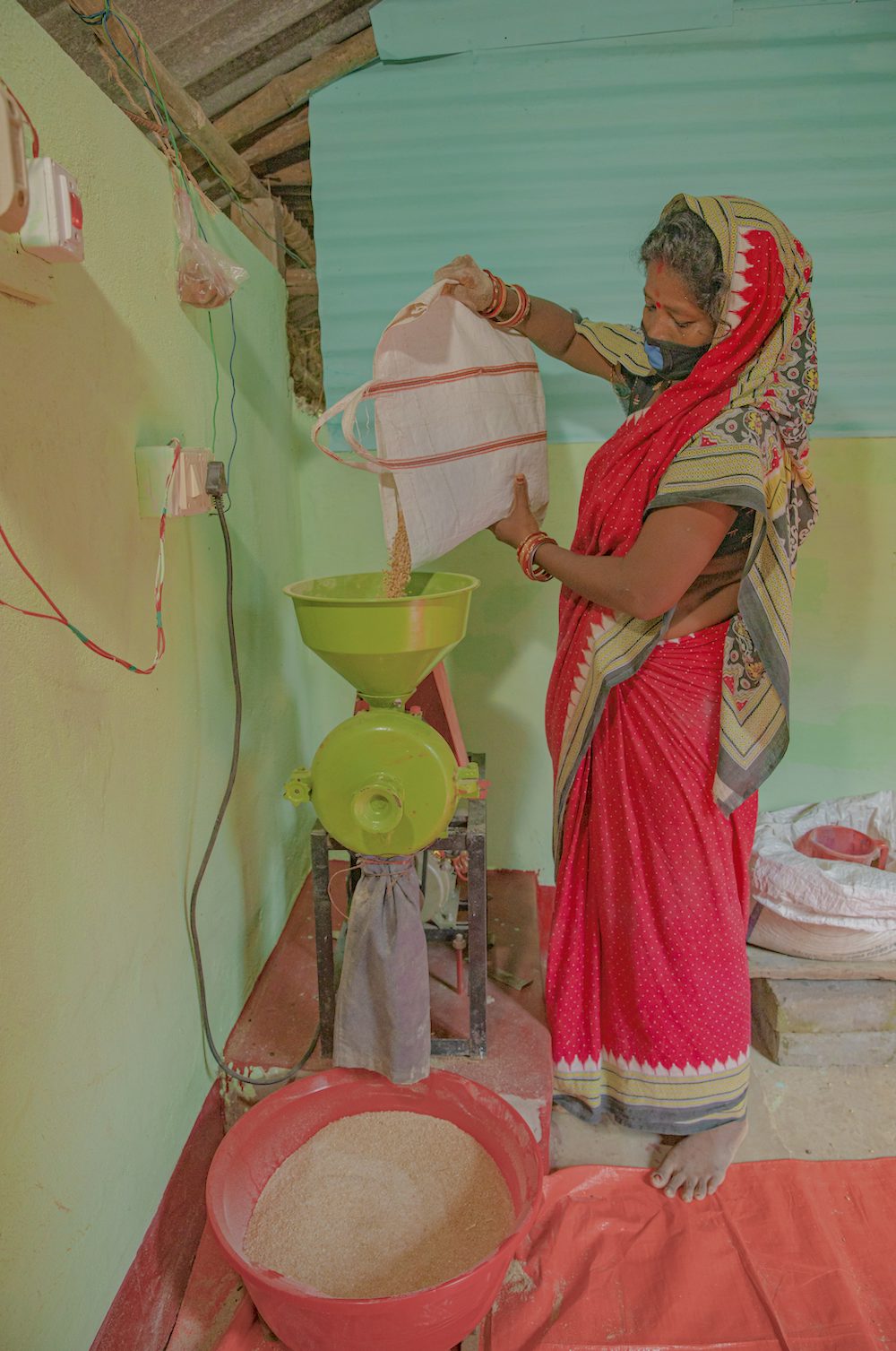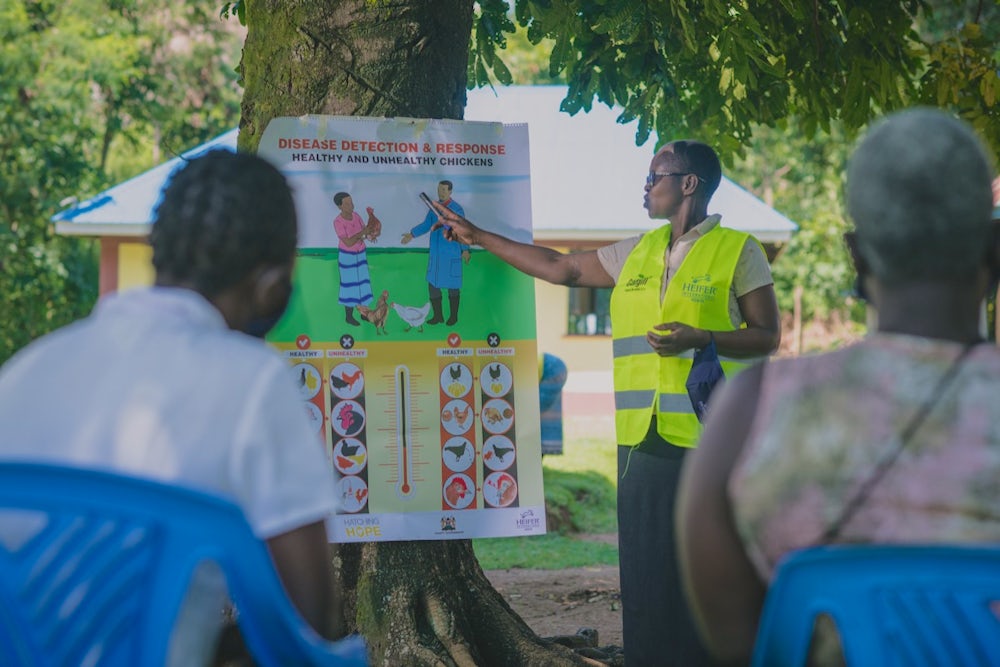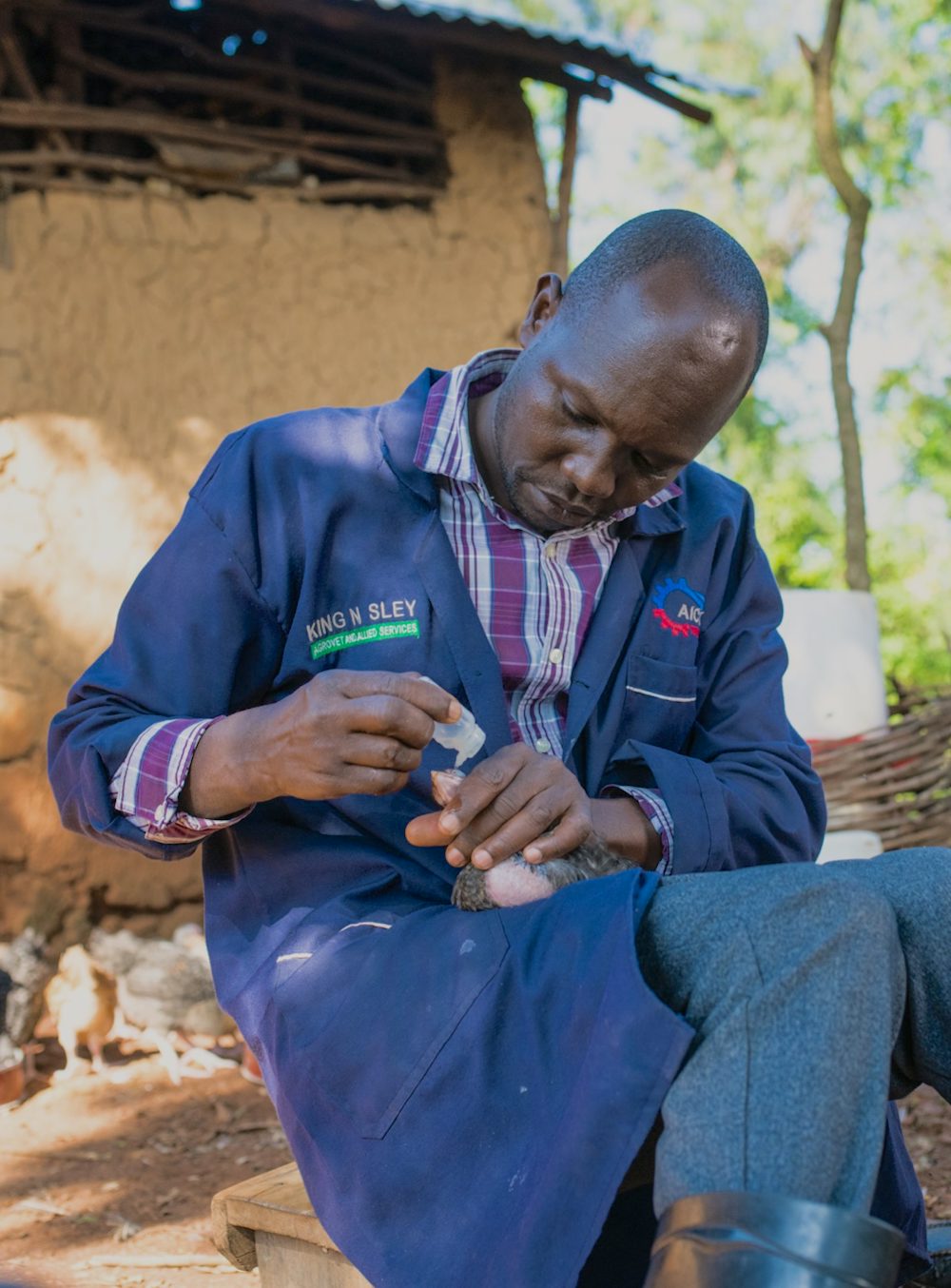In India and much of the world, including the United States, outbreaks of bird flu have been on the rise.
While large agricultural producers can sometimes be protected by the scale of their operations, smallholder farmers and backyard poultry producers in the communities where Heifer works are often far less resilient to shocks like an outbreak. Avian influenza, or bird flu, can have lasting impacts on food systems and farmer livelihoods.
For farmers like Lata Marndi, who keeps a small flock of chickens in rural India, backyard poultry are a sustainable pathway out of poverty — providing much-needed income to meet basic needs and nutrient-rich eggs for household consumption. With flu cases on the rise, however, they now face the very real threat of having to cull their entire flock if their chickens become infected with the highly contagious virus.
“Whenever the disease would hit, I used to lose all my birds over just a couple of days,” Lata explained. “Every time that happened, I had to start from scratch — every time.”

But in the years since partnering with Heifer, she’s transformed her operation, improving her birds’ health and ensuring her family was food secure amid the COVID-19 pandemic.
After training, Lata constructed a coop behind her house to protect her chickens from predators, learned how to provide her flock with nutritious feed and clean water, and came to understand the importance of vaccinating her poultry against diseases.
“With all chickens in [the] coop, I can feed them as well as get them vaccinated all at once without much hassle,” she said.
When the pandemic hit, Lata even embraced entrepreneurship: selling her chickens alongside processing chicken feed using a small mill she bought with Heifer’s support doubled her household income.
Now, the looming threat of bird flu puts her family’s food security, income and opportunities at risk once more.
Bird flu is a viral pathogenic influenza that spreads from bird to bird. In 2022, the most prevalent strain can infect poultry — including chickens, turkeys and pheasants — as well as wild birds, like waterfowl.
It is often spread by migratory birds, which is why quality coops made from locally available materials can have a significant impact on farmers’ poultry businesses, keeping healthy birds away from those that carry the disease.
Across its programs, Heifer prioritizes training in biosecurity measures to prevent the spread of diseases, keeping farmers and their animals safe and secure. These low-cost measures are extremely effective when rigorously implemented.
“Developing participants’ technical competency — teaching them how to take care of animals, build housing and [ensure proper] nutrition — and behavioral change competency together has tremendously helped our communities mitigate these disease outbreaks and increase productivity,” said Dilip Bhandari, Heifer’s senior director of programs in livestock technology and One Health (a CDC initiative focused on human, animal and environmental health).

Flock owners like Lata construct their coops with oversight from Heifer facilitators and implement biosecurity plans and practices that limit the introduction of new birds and prevent exposing their flock to wild fowl and other poultry.
Other measures, including placing low-cost disinfecting substances like potassium permanganate and lime powder at chicken coop entrances prevents contamination, said veterinarian and Heifer India Program Director Abhinav Gaurav.
“Scavenging is not encouraged, particularly during an outbreak,” he added, as chickens left to roam for food are more likely to interact with wild birds or their droppings, increasing the risk of contracting disease.
When sick birds are identified, they are immediately separated from the rest of the flock, he explained.
Healthier birds produce more eggs and earn higher prices. Local animal health workers known as Community AgroVet Entrepreneurs (CAVEs) are key to keeping animals — and communities — healthy and disease-free.
Heifer-trained CAVEs provide affordable vaccinations, deworming and treatments to flocks in their regions, but they are also uniquely positioned as front-line responders when disease outbreaks occur.
CAVEs may be the first to notice a disease’s prevalence, Dilip said, and will alert local animal health authorities when they do.

“They can be a triggering point. Once they report their observations, other agencies responsible for addressing the issue can come to the community,” he said.
Heifer’s development model helps place farmers at the center of cohesive business ecosystems with the support and investment they need to thrive, and it’s precisely this infrastructure — a community of facilitators, organized farmers groups and trained animal health workers — that helps biosecurity information and awareness campaigns spread efficiently.
If a CAVE notices something amiss at a collection point, for example, they can get the word out quickly, said Dilip.
“Our network of CAVEs, self-help groups, NGO partners and cooperatives allows information to be disseminated fast in our community,” he said. “As a result, farmers that are part of our programs take precautions much faster than other communities. That is happening and helping us minimize the risk of economic loss.”
Farmers like Lata and others in our projects around the globe are embracing the challenge of creating safe environments for their animals and their families. These precautionary steps and community responsiveness present the best chance of ensuring food security for smallholder farmers and continuing the work to end poverty and hunger in a sustainable way.
